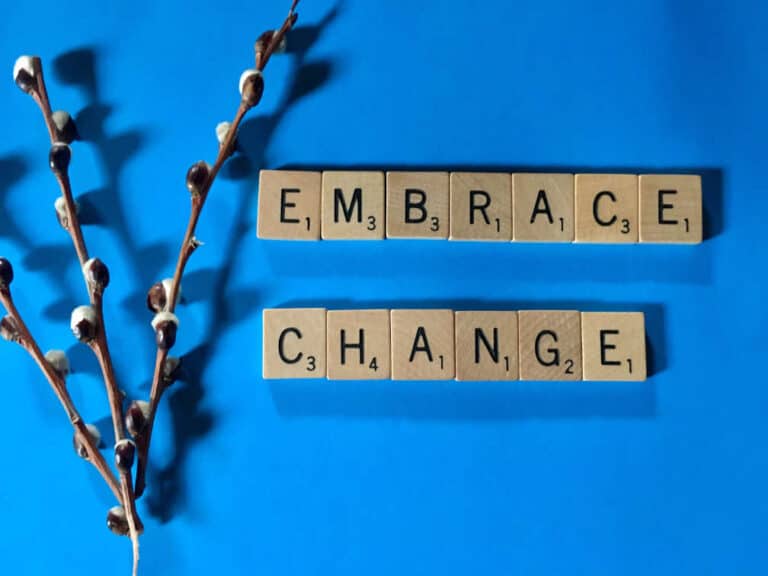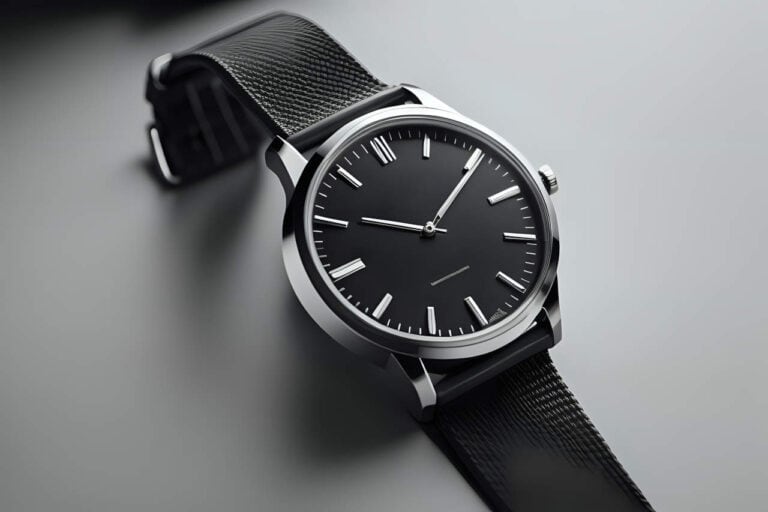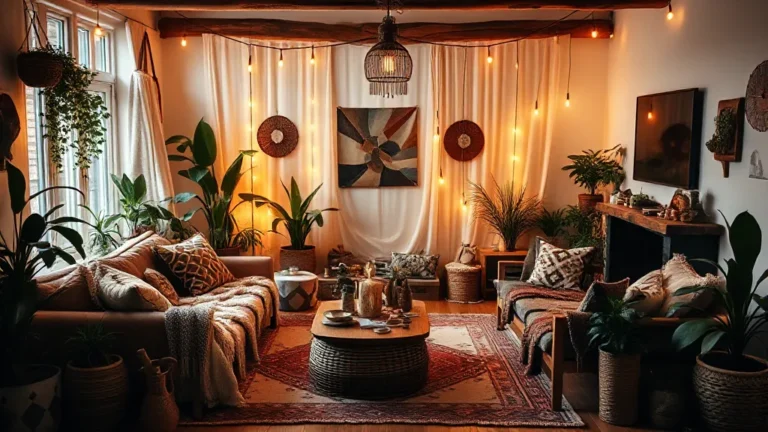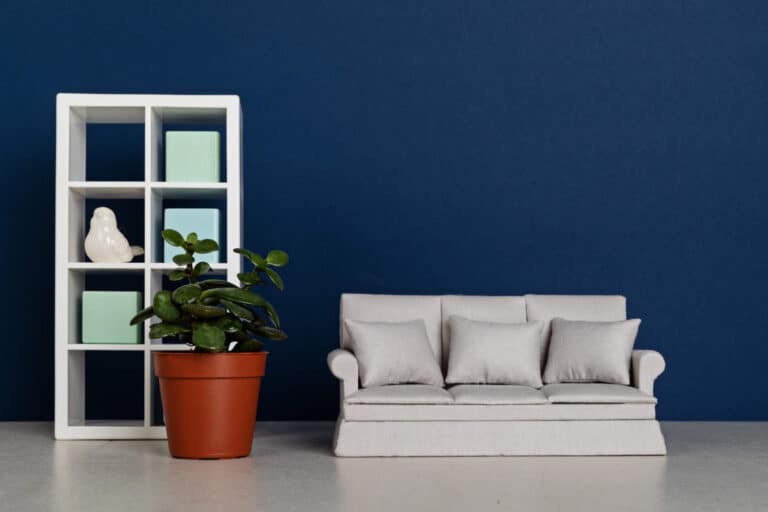The Ultimate Positive Guide – You and the Art of Minimalism – 15 Tips
You and the Art of Minimalism. The lifestyle of “more is less” has become an increasingly popular choice for many seeking more simplicity, focus, and joy in their daily lives. At its core, the art of minimalism emphasizes identifying what is essential in our lives and finding freedom through reducing excess.
| Key Takeaways |
| Focus on pursuing essential relationships, passions, and experiences versus material excess. |
| Declutter spaces and possessions regularly to create calming environments. |
| Make intentional choices when welcoming new items into your home. |
| Limit possessions to items that spark joy and serve specific purposes. |
| Simplify your schedule and streamline routines to reduce stress. |
| Apply minimalism in the kitchen to improve your diet and reduce waste. |
| Manage finances mindfully by saving, tracking expenses, and avoiding debt. |
| Curate your closet to cherished, quality pieces you actually wear. |
| Measure your minimalist success through metrics like time reclaimed and impulse buys avoided. |
| Align minimalism with sustainability by reducing consumption and waste. |
Embracing minimalism requires both an internal mindset shift as well as external changes to our spaces, possessions, and habits. Mastery of the art of minimalism takes mindfulness, discipline, and constant re-evaluation.
This comprehensive guide will provide key principles, strategies, and tips to help you on your journey towards minimalist living.

1. Understanding the Core Principles of Minimalism
You and the Art of Minimalism . The journey towards mastering minimalism begins with understanding its core philosophies and principles:
Focusing on the Essential
Minimalism encourages focusing on what is truly essential in your life. This could mean people, passions, purpose, health, or elements that spark joy and fulfillment. Minimalism helps remove what is non-essential so you can direct energy towards what matters most.
Intentionality in Possessions
Practice intentionality in what physical items you own and bring into your spaces. Consider the function, value, and meaning behind each possession.
Clarity Through Reduction
Remove clutter and excess to gain more mental clarity and focus. Decluttering creates space to process information and experiences.
Simplicity Over Complexity
Opt for simple solutions over complex ones. Simplifying spaces, schedules, and possessions reduces stress.
Quality Over Quantity
Minimalism favors owning higher quality, multipurpose possessions over having an abundance of lower quality items. Consider longevity and utility when making purchases.
Freedom Through Less
Limiting possessions provides a sense of freedom. Owning less also allows more flexibility to pursue opportunities and live on your own terms.
2. Developing a Minimalist Mindset
Adjusting mindsets and perspectives is key to successfully adopting a minimalist lifestyle. Here are some tips for cultivating a minimalist mindset:
- Question your motivations behind purchases – Analyze if new possessions are filling a temporary want or a need aligned with your values.
- Focus on experiences over materials – Prioritize spending on shared experiences like trips, meals out, concerts versus trendy gadgets or clothing.
- View possessions functionally – Assess if items serve a purpose or utility rather than simply bringing joy sparingly.
- Find fulfillment beyond possessions – Pursue hobbies, relationships, knowledge-building, and experiences that provide meaning.
- Embrace imperfection – Allow your spaces and belongings to have natural imperfections versus seeking picture-perfect spaces.
- Take pride in owning less – View living with fewer possessions as an accomplishment versus a sacrifice.
- Evaluate frequently – Reassess your belongings and spaces often to identify what can be removed, donated, or improved.
3. The Art of Decluttering and Letting Go
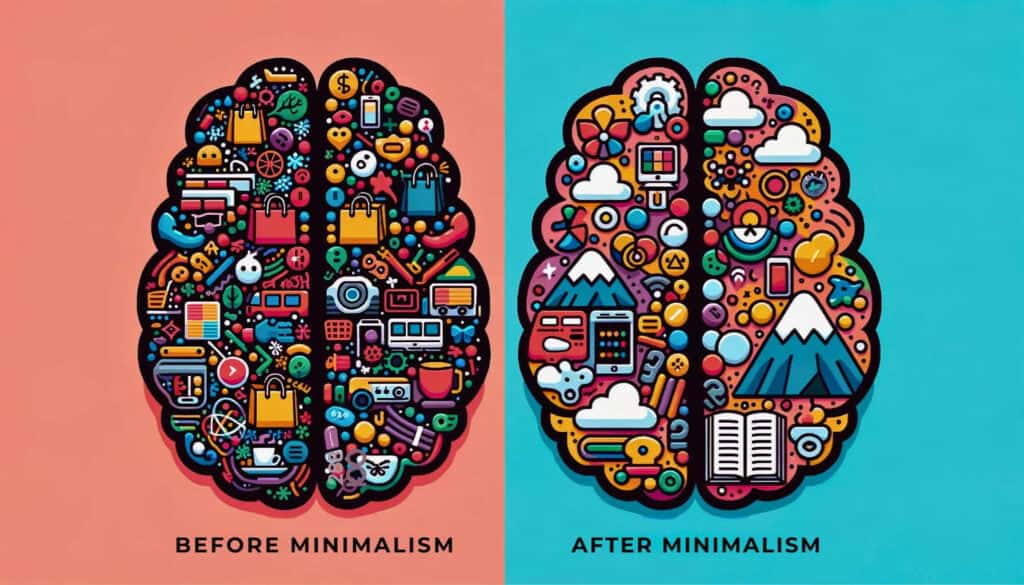
Decluttering is a core practice of the minimalist lifestyle. Mastering the art of decluttering requires discipline and emotional readiness to part with belongings.
Create a Vision
Envision how you want the space to look and function before decluttering. This provides motivation and direction.
Outline Decluttering Rules
Set parameters like “remove 3 items per day” or “eliminate any duplicates” to provide decluttering boundaries.
Gather Items by Category
Sort items into categories (clothes, books, papers etc.) before assessing what to remove. This allows you to evaluate similar items together.
Ask Key Questions
Analyzing each item’s utility and function helps determine if it sparks joy or serves a purpose. Ask questions like:
- When did I last use this?
- What value does this add to my life?
- Do I have multiples of this item?
- Would my life change without this?
- Does this align with my needs/values?
Discard First
Start by removing the obvious clutter that no longer serves you. This creates quick progress to maintain motivation.
Be Ruthless
Parting with items is easiest when you adopt a ruthless mindset instead of getting caught up in emotions. Focus on the benefits of owning less versus the item’s sentimentality.
Designate “Maybe” Piles
Creating a temporary pile for items you are uncertain about can prevent restarting the decluttering process. Re-evaluate these items after a few weeks.
Use the 20/20 Rule
If uncertain, pack away the items for 20 days/weeks. If you do not need them in that time, discard them.
Donate Generously
Donating useful items to charity helps them find new purpose while keeping them out of landfills.
Sell When Possible
Selling valuable items through garage sales, online marketplaces, or consignment provides additional income.
Be Thankful
Express gratitude to items for their purpose as you part with them. This provides closure.
Regular decluttering maintenance prevents buildup of excess and clutter over time. Dedicate time weekly or monthly to evaluate possessions and remove what no longer serves you.
4. Making Intentional Possession Choices
A minimalist lifestyle requires making deliberate choices about acquiring new possessions. When considering bringing an item into your home, ask:
- Is this item essential to my daily life/routines?
- Does it serve a functional purpose or fill a specific need?
- Will this item get regular use and improve my quality of life?
- Do I already own something similar that can serve the same purpose?
- Am I buying this to fill a temporary void or wanting?
- Will I still find value and enjoyment from this item in one year? Five years?
- Can this item be borrowed or rented versus purchased?
- Is this high quality and durable?
- Is this item aligned with my values and priorities?
- Will this item add to clutter and require maintenance?
Purchasing multipurpose, high quality items suited for your lifestyle prevents wasted spending and excess belongings.
Additionally, delaying a purchase for 20 days allows re-evaluation on if you still need or want the item. Buying used first or borrowing items can also prevent unnecessary purchases.
5. Creating Minimalist Spaces
Designing minimalist spaces allows your possessions, furniture, and decor to enhance functionality and flow. Here are some useful strategies:
Choose multitasking furniture – Items like ottomans with storage compartments or tables with built-in shelving maximize utility.
Limit furniture to the essentials – Stick to key furniture like beds, seating, tables, and storage pieces tailored to how you use the space.
Use thoughtful organization systems – Baskets, bins, or shelving makes belongings accessible while hiding clutter.
Display items intentionally – Only display your most loved decorative items or functional objects. Avoid cluttering surfaces.
Take advantage of blank space – Allow empty wall space and clean surfaces to create a soothing ambiance versus filling every inch.
Incorporate greenery – Houseplants provide life and freshness without clutter.
Maximize natural light – Open blinds, install skylights, and use mirrors to welcome in natural light.
Use multipurpose neutral colors – Neutral backdrops allow changing accent décor as tastes evolve over time.
Enable multi-use spaces – Use movable room dividers or furniture on wheels to adapt spaces for different needs.
Create serene sleeping spaces – Bedrooms especially benefit from minimalism for better sleep quality.
Evaluating how you use your current space and envisioning your ideal room setup is key to create a tailored minimalist living environment.
6. Streamlining Your Daily Routine
An overly packed schedule filled with tedious tasks is the antithesis of minimalist living. Here are some tips to streamline your routine:
Pare Down Your To-Do List
- Focus on completing the essential tasks versus every possible task.
- Group related tasks like emails together versus spreading them out.
- Be honest about what you can accomplish daily. Spread out excess tasks over the entire week or eliminate.
- Prioritize important and time-sensitive tasks at the start of your day or week. Gets these done first when energy is highest.
Consolidate Errands
- Plan errands by proximity instead of backtracking.
- Tackle shopping and errands only 1-2 days per week instead of daily.
Schedule Time Buffers
- Build in a 10-15 minute buffer between tasks or appointments.
- Alternate complex tasks with simpler ones.
Automate when possible
- Set up bill payments and other recurring tasks on autopilot.
- Leverage tools like Calendly for scheduling to avoid email exchanges.
Limit Meetings and Calls
- Consolidate updates into a weekly team call versus daily check-ins.
- Encourage email status updates versus calls to communicate.
Block Out Unstructured Time
- Leave time unscheduled for focusing on priorities and recharging.
Plan Weekly and Daily
- Review your week each Sunday to map out essential tasks and commitments.
- Plan the next day each evening so you can dive into key tasks each morning versus deciding.
Living intentionally instead of reacting to endless demands will restore focus on what matters most.
7. Practicing the Art of Minimalism with Food
Minimalism in the kitchen helps you reduce food waste, eat healthier, and spend less time meal planning and prepping. Useful strategies include:
Meal Planning
- Plan weekly meals around what you have on hand versus running to the store.
- Prepare 2-3 meals in bulk on one day instead of daily.
Simplify Ingredients
- Limit recipes to 5-6 key ingredients.
- Rely on versatile ingredients like onions, garlic, eggs, rice, beans etc.
Focus on Simple Whole Foods
- Build meals around vegetables, fruits, lean proteins, whole grains versus complex packaged foods.
Batch Prep and Cook
- Chop vegetables and meal prep components in bulk at once.
Use Time-Saving Appliances
- Leverage pressure cookers, slow cookers, and microwaves.
Freeze and Preserve
- Freeze portions to limit food going bad.
- Preserve seasonal produce via canning or drying.
Shop With a List
- Plan meals and make one comprehensive shopping list to avoid impulse buys.
- Shop only once per week.
Buy Whole Foods Versus Pre-Cut
- Save money and reduce plastic waste.
Cook at Home
- Limit eating out to save money and control portions.
A simplified, intentional approach to cooking and eating improves health while reducing time, cost, and waste.
8. Minimalist Money Management Principles
Minimalism in your finances provides clarity and control over spending. Here are some useful strategies:
Categorize Expenses
- Track where your money is going each month by categorizing expenses. This highlights problem areas for reduction.
Reduce Spending
- Look for low-hanging fruit like subscriptions you can cancel.
- Avoid impulse purchases and sleep on non-essentials for 20+ days before buying.
- Unplug from constant advertisements and shopping temptations online.
Pay with Cash
- Use cash for discretionary purchases like dining or entertainment to stay aware of spending.
Limit Debt and Credit Cards
- Avoid financing consumer purchases via financing plans or cards. Buy only what you can pay off.
Build an Emergency Fund
- Having a savings cushion prevents taking on credit debt during crises or gaps in income.
Automate Saving and Investing
- Automatically deposit a portion of each paycheck into savings and investment accounts.
Live Below Your Means
- Spend less than what your income allows, keeping fixed costs like rent low.
Focus Spending on Experiences
- Prioritize money towards shared experiences versus material goods.
9. Digital Minimalism Strategies
Emails, notifications, social media, and other digital noise competes heavily for our attention. Here are useful tips to reclaim focus:
Declutter Your Devices
- Organize apps into folders by function or frequency of use.
- Remove seldom used apps and widgets from your home screen.
- Unsubscribe from newsletters and email lists you no longer read.
Disable Notifications
- Turn off non-essential app notifications that pull your attention frequently.
Schedule Social Media Time
- Set a window like 30min in morning and evening to check apps versus all day access.
Schedule Email in Batch
- Limit yourself to checking email 2-3x day instead of constantly.
Use Mute Modes
- Take advantage of mute/do not disturb modes on your devices to prevent interruptions.
Adopt Inbox Zero
- Process emails quickly with a daily empty inbox goal.
Digital Sabbath
- Take one day off each week from digital devices to recharge.
Place limits around digital technology to prevent it from dominating your focus and priorities.
10. Traveling Light: Packing & Living with Less
Minimalist travel principles allow you to experience new places unburdened by excess luggage and belongings. Useful tips include:
Capsule Wardrobe
- Build versatile mix-and-match outfits around 2-3 colors to reduce clothing.
Roll Don’t Fold
- Rolling clothes avoids creasing and saves space.
Multitasking Shoes
- Choose shoes like loafers that pair with both casual and dressy outfits.
Lightweight Luggage
- Use lightweight carry-ons instead of checked bags.
Travel-Sized Toiletries
- Buy or fill small reusable bottles for toiletries.
Electronic Accessories
- Rely on multifunctional tech like a smartphone versus several gadgets.
Durable Quick-Dry Fabrics
- These allow washing clothes easily during trips versus packing excess.
Leave the Unneeded at Home
- Ask yourself “will I actually use this on my trip?”
A minimalist packing mentality prevents lugging excess. This frees you to fully engage in new experiences versus managing stuff.
11. Aligning Minimalism with Sustainability
Living sustainably and reducing your environmental impact aligns closely with minimalism principles:
Reduce Consumption
- Buy less overall, which reduces energy and materials used to produce goods.
Purchase Used and Repurposed
- Support secondhand stores and buy used when possible.
Choose Quality & Durability
- Quality stand the test of time and avoid the waste of cheaply made goods that break.
Repair Don’t Replace
- Fix, mend, and care for belongings instead of tossing and buying new.
Multifunctional & Versatile
- Choose items that serve multiple purposes.
Evaluate Packaging
- Avoid excessive plastic packaging when possible.
Creative Reuse
- Upcycle items for new purposes instead of trashing them.
Focus on Experiences
- Create memories and impact versus physical things.
Support Eco-Conscious Companies
- Do your research before purchasing to align values.
Living minimally allows pursuing a sustainable lifestyle more naturally, benefiting the planet.
12. Developing Mindful Relationships
Meaningful connections with others provide fulfillment that possessions cannot. Here are tips for cultivating minimalist relationships:
Depth over Breadth
- Focus on nurturing your closest relationships well versus spreading yourself thin across many superficial relationships.
Foster Shared Experiences
- Bond through activities, travel, and creating memories versus material gifts.
Give Time and Attention
- The greatest gift is your presence and engaged listening.
Avoid Comparisons
- Stay focused on your own growth and definition of success versus competing.
Offer Support Selflessly
- Be generous with emotional support without expecting anything in return.
Communicate Openly
- Speak truthfully and calmly work through conflicts.
Respect Alone Time
- Give friends space when needed without taking offense.
Meaningful relationships provide endless rewards when made a priority in a minimalist lifestyle.
13. Choosing a Minimalist Wardrobe
Owning a simplified, versatile wardrobe reduces getting ready time, laundering, and stress over having nothing to wear. Here are useful tips for creating a minimalist wardrobe:
Stick to a Core Color Palette
- Choose 2-3 neutral colors like black, white, grey, tan as your base. These inherently mix and match well.
- Add a few pops of color through shirts, accessories, or prints to switch things up.
Focus on High Quality Basics
- Invest in well-made basic t-shirts, button downs, jeans/pants, dresses, and sweaters in materials like wool, cotton, and leather.
- Versatile basics resist fading in popularity versus trendy statement pieces.
Choose Multipurpose Items
- Look for pieces like blazers that pair with jeans for casual looks but also dress up for work.
- Scarves, jewelry, and hairstyle changes also easily change basics for different occasions.
Limit One Item Per Type
- Owning multiple similar jeans or sweaters is excessive. Choose your favorite one in each category.
Only Keep What You Wear
- If you constantly pass over an item in favor of another, remove the unworn item.
Shop Secondhand First
- Browse consignment stores before buying new to source quality basics and support reuse.
Evaluate Seasonally
- Assess your wardrobe each season and remove pieces you didn’t wear to create room for new versatile additions.
Owning a curated closet of cherished, useful items tailored to your lifestyle provides freedom versus continually chasing new trends.
14. Measuring Success in Minimalism
As you embrace minimalism, consider these metrics to track positive shifts:
Possessions purged – Keep track of the raw number of items you donate, sell, or recycle.
Clothing worn percentage – Calculate what percent of clothes in your closet are worn regularly versus sitting unworn.
Time reclaimed – Estimate time saved by simplifying tasks, schedules, and routines.
Money saved – Calculate dollars saved from lifestyle shifts like eating out less.
Impulse purchases avoided – Track purchases you paused on and ultimately avoided.
Digital distractions reduced – Count notifications turned off and apps removed from your phone screen.
Life satisfaction rating – Periodically rate your overall life satisfaction on a 1-10 scale.
Stress levels – Note daily stress on a 1-10 scale and track changes over time.
Mindfulness – Measure your sense of focus, calm, gratitude, and awareness day-to-day.
While minimalism is about quality over quantity, tracking metrics keeps you accountable and motivated on your journey. The numbers affirm your progress!
15. Key Takeaways – you and the art of minimalism
- Focus on pursuing essential relationships, passions, and experiences versus material excess.
- Declutter spaces and possessions regularly to create calming environments.
- Make intentional choices when welcoming new items into your home.
- Limit possessions to items that spark joy and serve specific purposes.
- Simplify your schedule and streamline routines to reduce stress.
- Apply minimalism in the kitchen to improve your diet and reduce waste.
- Manage finances mindfully by saving, tracking expenses, and avoiding debt.
- Curate your closet to cherished, quality pieces you actually wear.
- Measure your minimalist success through metrics like time reclaimed and impulse buys avoided.
- Align minimalism with sustainability by reducing consumption and waste.
Mastering minimalism takes practice and constant re-evaluation to stick to core principles. But the clarity, focus, and fulfillment gained makes the effort well worth it!
This comprehensive guide provided key steps to transform your thinking, spaces, belongings, and habits through the art of minimalism. What principles or strategies resonated most with you to apply in your own life?

